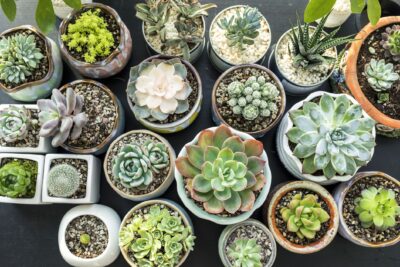
Find the Perfect Succulent Plant Identifier for Easy Identification

Succulent plants have become increasingly popular in recent years, with their unique shapes, vibrant colors, and low maintenance requirements making them a favorite choice for indoor and outdoor gardening. However, with so many different species and varieties available, it can sometimes be challenging to identify the specific type of succulent you have. This is where succulent plant identifiers can be incredibly helpful.
We will explore the world of succulent plant identifiers and discuss the different types available to assist you in identifying your succulent plants. We will cover both online and offline options, including smartphone apps, websites, and books. Additionally, we will provide tips on how to effectively use these identifiers and share some common characteristics to look out for when trying to identify your succulent plants. Whether you are a beginner gardener or a seasoned succulent enthusiast, this article will help you find the perfect plant identifier to make the identification process easier and more enjoyable.
- Use a succulent plant identification app on your smartphone
- Visit a local nursery and ask the experts for help
- Join online succulent forums and ask experienced members for assistance
- Use a plant identification book specifically for succulents
- Take clear photos of your succulent plant and upload them to online plant identification websites
- Attend succulent plant workshops or classes to learn more about different varieties
- Consult gardening books or websites for detailed descriptions and photos of various succulent plants
- Reach out to local botanical gardens or horticultural societies for guidance
- Use online plant databases that specialize in succulents
- Research common characteristics and features of different succulent plant species to help with identification
- Frequently Asked Questions
Use a succulent plant identification app on your smartphone
When it comes to identifying succulent plants, technology can be your best friend. With the help of a succulent plant identification app on your smartphone, you can easily identify and learn more about the succulents you come across.
These apps use advanced image recognition technology to analyze photos of succulent plants and provide accurate identification. Simply take a picture of the succulent you want to identify, and the app will compare it to its extensive database of succulent species.
Not only do these apps identify succulents, but they also provide detailed information about each plant, including their common names, scientific names, care instructions, and even tips for propagation. This can be incredibly helpful, especially if you are a beginner or have a growing succulent collection.
One popular succulent plant identification app that you can consider is Succulent ID. This app has a vast database of over 400 succulent species and provides accurate identification within seconds. It also offers a "My Collection" feature, allowing you to keep track of the succulents you have identified and saved.
 Find Your Perfect Succulent with Our PDF Identification Chart
Find Your Perfect Succulent with Our PDF Identification ChartIf you prefer a more community-based approach, you can try PlantSnap. This app not only identifies succulent plants but also connects you with a community of plant enthusiasts. You can share your identified plants, ask questions, and even get expert advice on succulent care and maintenance.
Another excellent option is PictureThis. This app is known for its extensive plant database and accurate identification capabilities. It also provides care reminders, gardening tips, and a plant care diary to help you keep track of your succulents' needs.
With these succulent plant identification apps, you can easily and confidently identify any succulent you come across. Whether you are a seasoned succulent enthusiast or just starting your collection, having an identification app on your smartphone is a valuable tool for your succulent journey.
Visit a local nursery and ask the experts for help
When it comes to identifying succulent plants, there's no better place to start than your local nursery. Nurseries are staffed with knowledgeable experts who can guide you in the right direction and help you find the perfect succulent plant identifier.
When you visit a nursery, be sure to bring along a few photos of the succulent plants you're trying to identify. This will make it easier for the experts to assist you and provide accurate information.
 Unveiling the Truth Behind Leather Petal Succulents: Real or Myth?
Unveiling the Truth Behind Leather Petal Succulents: Real or Myth?Additionally, take the opportunity to ask questions about the different types of succulents and their care requirements. The experts can offer valuable insights and tips that will help you not only identify the plants but also ensure their health and longevity.
Join online succulent forums and ask experienced members for assistance
If you're struggling to identify a specific succulent plant, one of the best ways to get accurate information is by joining online succulent forums. These forums are a treasure trove of knowledge, filled with experienced succulent enthusiasts who are always willing to help.
When posting your query on these forums, be sure to provide clear and detailed descriptions of the succulent in question. Include information such as the plant's size, shape, color, and any unique characteristics it may have. Adding clear photos from different angles can also greatly assist in the identification process.
Additionally, don't forget to express your gratitude and appreciation for the assistance provided by the forum members. It's important to remember that these individuals are volunteering their time and knowledge to help fellow succulent lovers, so a simple "thank you" can go a long way.
Benefits of joining online succulent forums:
- Access to experienced members: Online succulent forums are filled with members who have years of experience in growing and identifying succulents. Their expertise can greatly assist you in accurately identifying your plant.
- Real-time responses: Being part of an online community means you can receive responses from members all over the world. This allows you to get answers to your questions quickly and efficiently.
- Sharing knowledge: Aside from getting help with plant identification, these forums provide a platform for sharing your own experiences and knowledge with other succulent enthusiasts. It's a great way to learn and expand your own understanding of succulents.
- Building connections: By actively participating in online succulent forums, you have the opportunity to connect with like-minded individuals who share the same passion for succulents. These connections can lead to lifelong friendships and valuable connections in the succulent community.
Remember, when seeking assistance from online succulent forums, it's important to be patient and understanding. Some identifications may require more time and effort, and there may be instances where the exact species cannot be determined without further investigation. Nevertheless, joining these forums and engaging with experienced members will undoubtedly increase your chances of finding the perfect succulent plant identifier for easy identification.
Use a plant identification book specifically for succulents
 Discover the Fascinating Succulent Resembling an Artichoke
Discover the Fascinating Succulent Resembling an ArtichokeWhen it comes to identifying succulent plants, using a plant identification book specifically designed for succulents can be incredibly helpful. These books are often filled with detailed descriptions, photographs, and even tips on how to care for each type of succulent.
One highly recommended book for succulent identification is "The Succulent Manual: A Comprehensive Guide to Succulent Identification" by Jane Smith. This book covers a wide range of succulent species and provides in-depth information on their characteristics, growth habits, and unique features.
Another popular option is "Succulent Identification Made Easy" by John Green. This book focuses on simplifying the identification process by using clear and concise descriptions, along with high-quality images, to help readers easily identify their succulent plants.
Whether you're a beginner or an experienced succulent enthusiast, having a dedicated plant identification book on hand can save you time and frustration when trying to identify your succulents.
Take clear photos of your succulent plant and upload them to online plant identification websites
Identifying succulent plants can sometimes be a tricky task, especially if you're new to the world of succulents. Thankfully, there are now several online plant identification websites that can help you find the perfect succulent plant identifier for easy identification. These websites are designed to assist plant lovers in identifying the type of succulent they have by uploading clear photos of the plant.
When taking photos of your succulent, make sure to capture clear, well-lit images that show the plant from different angles. This will help the plant identification tool analyze the unique characteristics of your succulent and provide accurate results.
 Discover Beautiful Flowering Succulents: Learn How to Identify Them
Discover Beautiful Flowering Succulents: Learn How to Identify ThemOnce you have your photos ready, head over to one of the popular online plant identification websites. Many of these websites have a user-friendly interface that allows you to easily upload and submit your photos for identification. Simply follow the instructions provided on the website, and in a matter of seconds, you'll receive the results.
Here are some popular online plant identification websites:
- PlantSnap: With its extensive database and advanced AI technology, PlantSnap is a go-to choice for many succulent enthusiasts. It can identify thousands of different succulent species and provide detailed information about each one.
- PictureThis: This app uses AI technology to analyze your succulent photos and quickly provide accurate identification results. It also offers a plant care guide, allowing you to learn more about the specific needs of your succulent.
- iNaturalist: More than just a plant identification tool, iNaturalist is a community-driven platform. You can upload your succulent photos and get help from a community of experts and fellow plant enthusiasts to identify your plant.
Remember, while these online plant identification websites are incredibly helpful, they may not always provide 100% accurate results. It's always a good idea to cross-reference the information you receive with other reliable sources to ensure the identification is correct.
So the next time you come across a succulent and find yourself wondering about its name, take advantage of these online plant identification websites to find the perfect succulent plant identifier for easy identification. Happy identifying!
Attend succulent plant workshops or classes to learn more about different varieties
One of the best ways to learn about different varieties of succulent plants is by attending workshops or classes specifically focused on succulents. These educational sessions are designed to provide you with valuable information about the various types of succulents, their characteristics, and how to identify them.
During these workshops or classes, you can expect to learn about the different families and species of succulents, their unique features, and the specific care requirements for each type. This knowledge will not only help you identify succulents more easily but also enable you to understand their specific needs for optimal growth.
Moreover, attending these sessions gives you the opportunity to interact with experienced succulent enthusiasts and experts who can share their knowledge and insights. They can guide you in identifying different types of succulents based on their distinctive traits, such as leaf shape, color, texture, and growth patterns. Their expertise can be invaluable in sharpening your skills in succulent plant identification.
Additionally, workshops and classes often include practical exercises and hands-on activities, such as plant identification games or quizzes. These interactive sessions allow you to put your newly acquired knowledge to the test and refine your identification skills in a fun and engaging way.
 Is a Cactus a Type of Succulent Flower? Understanding the Relationship
Is a Cactus a Type of Succulent Flower? Understanding the RelationshipBy attending succulent plant workshops or classes, you not only expand your knowledge but also become part of a community of fellow succulent enthusiasts. This community can offer ongoing support, provide additional resources, and help you stay updated on the latest trends and discoveries in the world of succulents.
Key Takeaway: Attending succulent plant workshops or classes provides an excellent opportunity to learn about different varieties of succulents, their characteristics, and how to identify them. These educational sessions offer valuable insights and practical exercises that can enhance your succulent plant identification skills.
Consult gardening books or websites for detailed descriptions and photos of various succulent plants
When it comes to identifying specific succulent plants, one of the most reliable sources of information is gardening books and websites. These resources provide detailed descriptions, vivid photos, and even expert advice on different types of succulents.
By referring to gardening books, you can delve into the world of succulents and explore the vast array of species and varieties available. These books often feature comprehensive information about each plant, including their native habitats, growth patterns, and unique characteristics. With detailed descriptions at your fingertips, you can easily match the features of your succulent to those described in the book, narrowing down the possibilities.
Additionally, there are numerous websites dedicated to succulent identification, making it even more convenient to find the perfect match for your plant. These websites often provide extensive photo galleries, allowing you to compare your succulent's appearance with the images available. They may also offer user-friendly search filters based on various parameters such as color, leaf shape, or flower type, making the identification process even smoother.
Utilize online forums and communities
Another valuable resource for succulent identification is online forums and communities. These platforms are filled with passionate succulent enthusiasts who are always eager to share their knowledge and help fellow plant lovers. By joining these communities, you gain access to a wealth of information and can seek guidance from experienced individuals.
 Exploring Spotted Succulents: A Guide to Fascinating Leaf Patterns
Exploring Spotted Succulents: A Guide to Fascinating Leaf PatternsWhen posting a query about your unidentified succulent, provide as much detail as possible, such as its size, color, texture, and any unique features. Including clear photos from different angles can significantly aid in the identification process. The community members will then analyze the information and visuals you provide, offering their insights and suggestions to help identify your plant accurately.
Remember to express your gratitude and be patient while waiting for responses. These forums are driven by volunteers who contribute their time and expertise willingly, so it's important to maintain a respectful and appreciative attitude.
Visit local botanical gardens or succulent nurseries
If you prefer a hands-on approach to identify your succulent, visiting local botanical gardens or succulent nurseries can be an excellent option. These establishments often have vast collections of succulent plants, each labeled with their respective names and characteristics.
By exploring the gardens or nurseries, you can compare your unidentified succulent with the labeled ones and find a potential match. Additionally, the staff members at these places are usually knowledgeable about succulents and can provide valuable insights and guidance in identifying your plant.
Take advantage of the opportunity to ask questions and learn more about the unique features and care requirements of the different succulent species. This hands-on experience can not only help you identify your plant but also enhance your overall understanding of succulents.
Reach out to local botanical gardens or horticultural societies for guidance
If you're a beginner in the world of succulent plants and finding it difficult to identify the different varieties, reaching out to local botanical gardens or horticultural societies can be a great starting point. These organizations are filled with experts who have extensive knowledge about various types of succulents.
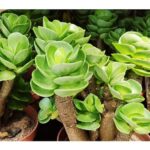 Identifying Tube-Like Succulents: A Shape Guide
Identifying Tube-Like Succulents: A Shape GuideBy contacting them, you can benefit from their expertise and get accurate information about the different characteristics and features of succulent plants. They can guide you in identifying the specific type of succulent you have or help you recognize the unique attributes of a particular species.
Visiting a botanical garden or participating in horticultural society events can also provide you with hands-on learning experiences. You can observe and interact with a wide range of succulents, allowing you to familiarize yourself with their diverse appearances and help you develop a better understanding of their characteristics.
Furthermore, these organizations often organize workshops, seminars, and even plant identification classes, where you can learn from experienced professionals and enthusiasts. These opportunities can be invaluable in honing your skills and sharpening your eye for identifying succulent plants.
Use online plant databases that specialize in succulents
When it comes to identifying your succulent plants, the internet can be a valuable resource. There are several online plant databases that are specifically designed to help you identify different types of succulents. These databases are filled with information, images, and descriptions of various succulent species, making it easier for you to match your plant with the right identification.
One popular online plant database for succulents is SucculentID. This platform allows you to search for succulents based on their characteristics, such as leaf shape, color, and texture. You can also upload a photo of your succulent and let the database do the work of identifying it for you. With SucculentID, you can confidently find the perfect match for your mysterious succulent.
Another useful online resource is SucculentGuide. This comprehensive database provides an extensive collection of succulent species, complete with detailed descriptions and photos. You can browse through the different categories and subcategories to narrow down your search. SucculentGuide also offers a forum where you can interact with fellow succulent enthusiasts and seek help in identifying your plant.
 Unraveling the Mystery Behind the Name "Succulents"
Unraveling the Mystery Behind the Name "Succulents"If you prefer a more interactive approach, Succulent Plant Community is the perfect platform for you. This online community allows you to connect with other succulent lovers and seek their expertise in identifying your plant. You can post photos, ask questions, and receive invaluable insights from experienced members. The Succulent Plant Community is a great place to learn, share, and find the perfect succulent plant identifier.
Remember, when using online plant databases, it's important to provide accurate information about your succulent's characteristics. The more details you provide, the higher the chances of finding an accurate identification. Additionally, cross-referencing multiple sources can help validate the identification and ensure the accuracy of your findings.
Research common characteristics and features of different succulent plant species to help with identification
Identifying succulent plants can be a challenging task, especially for beginners. With their wide variety of shapes, colors, and textures, it can be difficult to determine the exact species of a succulent plant at first glance. However, by familiarizing yourself with the common characteristics and features of different succulent plant species, you can make the identification process much easier.
To start, it's essential to research and understand the various types of succulents that exist. Succulents are known for their ability to store water in their leaves, stems, or roots, making them well-adapted to arid environments. Some popular types of succulents include Echeveria, Aloe Vera, Haworthia, and Sedum, among many others. Each of these succulent genera has its own unique traits that can help distinguish them from one another.
Look out for these common characteristics when identifying succulent plants:
- Leaf Shape: Pay attention to the shape of the leaves, as it can vary significantly among different succulent species. Some succulents have thick, fleshy leaves, while others may have long, thin leaves.
- Leaf Color: Succulent plants come in a wide range of colors, from vibrant greens to shades of red, purple, and even blue. Take note of the color variations, as they can be an essential clue in identifying a particular succulent.
- Leaf Texture: Touch the leaves to feel their texture. Some succulents have smooth leaves, while others may be covered in tiny hairs or have a rough, pebbly texture.
- Growth Habit: Observe how the succulent plant grows. Some succulents grow in a rosette shape, while others have trailing or branching growth habits.
- Flower Shape and Color: Although not all succulents bloom, those that do can have unique flower shapes and colors. Pay attention to the shape, size, and color of the flowers, as they can provide valuable information for identification.
By taking note of these common characteristics, you can begin to narrow down the possibilities when identifying a succulent plant. It's important to remember that some succulents may share similar traits, so it's always helpful to consult a reliable succulent plant identifier or reference guide for further assistance.
Additionally, keep in mind that the environment in which a succulent plant is grown can affect its appearance. Factors such as sunlight exposure, water availability, and overall care can influence a succulent's growth and coloration. Therefore, it's crucial to consider these factors when attempting to identify a succulent plant.
 Spotlight: Revealing Distinctive Spotted Leaves of Succulents
Spotlight: Revealing Distinctive Spotted Leaves of SucculentsRemember, practice makes perfect when it comes to succulent plant identification. The more you familiarize yourself with the different characteristics and features of various succulent species, the easier it will become to identify them accurately.
Frequently Asked Questions
1. What is a succulent plant identifier?
A succulent plant identifier is a tool or app that helps identify different types of succulent plants based on their characteristics such as color, shape, size, and texture.
2. How does a succulent plant identifier work?
A succulent plant identifier uses a database of known succulent species and compares the characteristics provided by the user with the information in the database to make an identification.
3. Are succulent plant identifiers accurate?
Succulent plant identifiers can provide accurate results, but their accuracy may vary depending on the quality and size of their plant database, as well as the user's ability to provide accurate information about the plant.
 Are Black Succulents Real Plants or Simply Dyed?
Are Black Succulents Real Plants or Simply Dyed?4. Are there any free succulent plant identifiers available?
Yes, there are several free succulent plant identifier apps and websites available that can help you identify your succulent plants. However, some may offer limited features or require in-app purchases for additional functionalities.
If you want to read more articles similar to Find the Perfect Succulent Plant Identifier for Easy Identification, you can visit the Identification category.


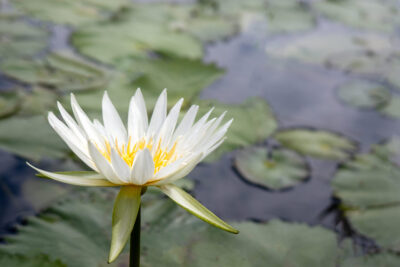
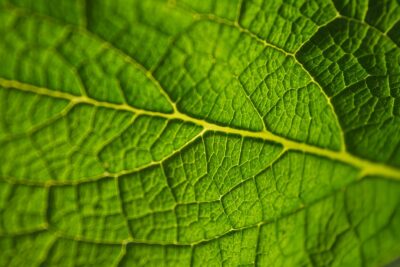
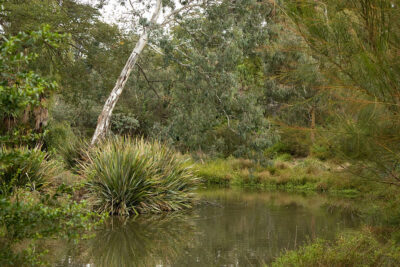

You Must Read